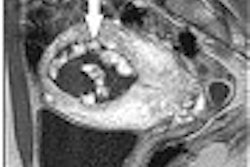Dear MRI Radiology Insider,
The number of people in the U.S. suffering from Alzheimer’s disease could top 13 million by 2050, according to recently published research. To gain new understanding of this terrible disease, a group at Rush-Presbyterian-St. Luke's Medical Center analyzed Alzheimer’s data from Chicago neighborhoods, then applied the findings to the general population.
They calculated that in 2000, 4.5 million people in the U.S. had Alzheimer's -- a figure that is likely to jump to 13.2 million by mid-century due to the aging population (Archives of Neurology, August 2003, Vol. 60:8, pp. 1119-1122).
But the extent to which this will occur depends on the inroads made in Alzheimer’s diagnosis and treatment. Needless to say, the neurology community is already on the case.
Two studies presented at the 2003 International Psychogeriatric Association meeting in Chicago used MR to assess whether modern drugs actually slow the progress of dementia. Investigators from Chicago performed proton NMR spectroscopy, tying mild cognitive impairment to early right hippocampal involvement. Meanwhile, a group from Duke University in Durham, NC, checked on hippocampal volume with MRI markers. As an MRI Insider subscriber, you can have the first look here.
On the diagnosis front, a group from Oregon Health & Sciences University in Portland relied on MR to assess whether antemortem changes in brain-volume measurements are valid predictors of Alzheimer’s disease. Did they succeed? Click here to find out.
Finally, you'll want to check back with the MRI Digital Community later in the month for the latest research from the Royal Australian and New Zealand College of Radiologists meeting in Brisbane, as well as the International Skeletal Society conference in San Francisco.




















